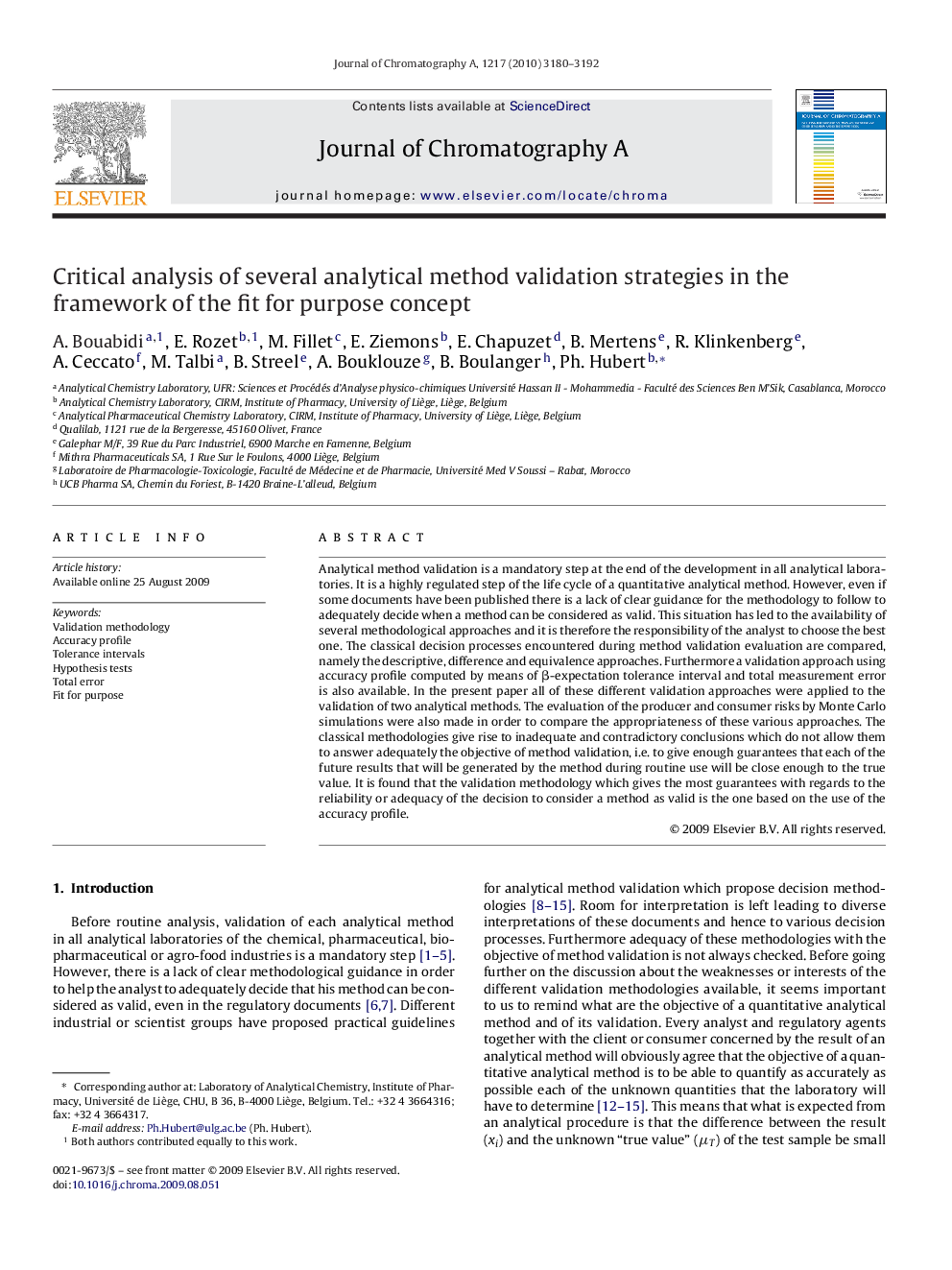| Article ID | Journal | Published Year | Pages | File Type |
|---|---|---|---|---|
| 1209347 | Journal of Chromatography A | 2010 | 13 Pages |
Analytical method validation is a mandatory step at the end of the development in all analytical laboratories. It is a highly regulated step of the life cycle of a quantitative analytical method. However, even if some documents have been published there is a lack of clear guidance for the methodology to follow to adequately decide when a method can be considered as valid. This situation has led to the availability of several methodological approaches and it is therefore the responsibility of the analyst to choose the best one. The classical decision processes encountered during method validation evaluation are compared, namely the descriptive, difference and equivalence approaches. Furthermore a validation approach using accuracy profile computed by means of β-expectation tolerance interval and total measurement error is also available. In the present paper all of these different validation approaches were applied to the validation of two analytical methods. The evaluation of the producer and consumer risks by Monte Carlo simulations were also made in order to compare the appropriateness of these various approaches. The classical methodologies give rise to inadequate and contradictory conclusions which do not allow them to answer adequately the objective of method validation, i.e. to give enough guarantees that each of the future results that will be generated by the method during routine use will be close enough to the true value. It is found that the validation methodology which gives the most guarantees with regards to the reliability or adequacy of the decision to consider a method as valid is the one based on the use of the accuracy profile.
